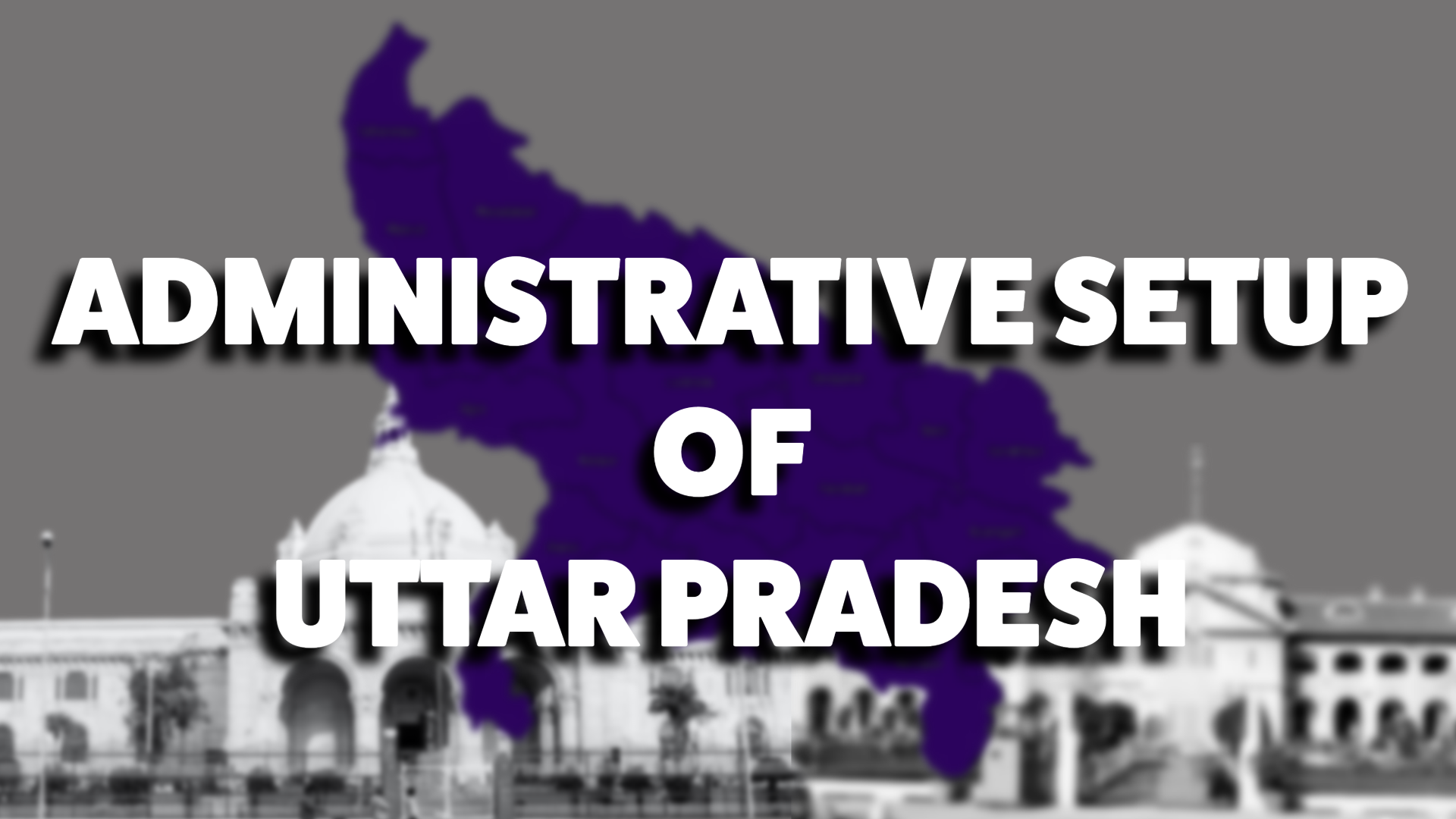Introduction
The administrative setup in Uttar Pradesh is designed [1] to ensure effective governance, law enforcement, and service delivery across its vast population. The state operates through a well-structured administrative and policing framework that spans multiple tiers of control — divisions, districts, sub-divisions, and local bodies. Each police sub-division is supervised by an officer of the rank of Assistant Superintendent of Police (ASP) or Deputy Superintendent of Police (DSP), and all ministries and departments are led by respective cabinet ministers, forming the backbone of the state’s administrative setup.
Divisional Structure
Uttar Pradesh is divided into multiple administrative divisions, each encompassing several districts. These divisions serve as the intermediate layer in the state’s administrative setup, bridging the gap between state-level authorities and district-level execution.
List of Divisions and Districts[2]
| Division | Headquarters | Districts |
|---|---|---|
| Agra | Agra | Agra, Mathura, Mainpuri, Firozabad |
| Aligarh | Aligarh | Aligarh, Etah, Hathras, Kasganj |
| Faizabad (Ayodhya) | Ayodhya | Faizabad, Ambedkar Nagar, Barabanki, Sultanpur, Amethi |
| Azamgarh | Azamgarh | Azamgarh, Ballia, Mau |
| Bareilly | Bareilly | Bareilly, Pilibhit, Shahjahanpur, Badaun |
| Basti | Basti | Basti, Sant Kabir Nagar, Siddharthnagar |
| Chitrakoot | Banda | Banda, Chitrakoot, Hamirpur, Mahoba |
| Devipatan | Gonda | Bahraich, Balrampur, Gonda, Shravasti |
| Gorakhpur | Gorakhpur | Deoria, Gorakhpur, Kushinagar, Maharajganj |
| Jhansi | Jhansi | Jalaun, Jhansi, Lalitpur |
| Kanpur | Kanpur | Auraiya, Etawah, Farrukhabad, Kannauj, Kanpur Dehat, Kanpur Nagar |
| Lucknow | Lucknow | Hardoi, Lakhimpur Kheri, Lucknow, Raebareli, Sitapur, Unnao |
| Meerut | Meerut | Baghpat, Bulandshahr, Gautam Buddha Nagar, Ghaziabad, Meerut, Hapur |
| Mirzapur | Mirzapur | Mirzapur, Sant Ravidas Nagar, Sonbhadra |
| Moradabad | Moradabad | Bijnor, Amroha, Moradabad, Rampur, Sambhal |
| Allahabad | Allahabad | Allahabad, Fatehpur, Kaushambi, Pratapgarh |
| Saharanpur | Saharanpur | Muzaffarnagar, Saharanpur, Shamli |
| Varanasi | Varanasi | Chandauli, Ghazipur, Jaunpur, Varanasi |
This detailed list reflects the current administrative setup and jurisdictional alignment of the state.
Constitutional Setup
Uttar Pradesh operates under the Indian Constitution, with a bicameral legislature and a Governor as the constitutional head. The administrative setup includes the Vidhan Sabha (Legislative Assembly) [3] with 404 members (403 elected, 1 nominated) and the Vidhan Parishad (Legislative Council) with 100 members.
Judiciary
The judiciary operates independently from the executive arm of the administrative setup since its separation in 1967. The High Court, headquartered in Allahabad (Now Prayagraj) [4] with a permanent bench in Lucknow, exercises top-tier jurisdiction.
Subordinate Judicial Service
- U.P. Civil Judicial Services – Munsifs, Civil Judges (including Small Causes)
- U.P. Higher Judicial Service – Civil & Sessions Judges, ADJs
Every judicial district is overseen by a District Judge, although sometimes one judge may oversee more than one revenue district.
Judicial Hierarchy
- Civil Cases: Munsif → Civil Judge → District Judge
- Criminal Cases: Munsif → Magistrate → Sessions Judge
Revenue Judiciary
The revenue side of the administrative setup consists of:
- Assistant Collectors
- Additional Collectors
- District Collectors
- Divisional Commissioners
- Board of Revenue (highest appellate body for revenue matters)
Panchayat Level Judiciary
As per the U.P. Panchayat Raj Act, Nyaya Panchayats can hear civil cases up to ₹500 in value. They are not empowered to award imprisonment.
U.P. Public Service Tribunal
Established in 1976, this tribunal [5] is a part of the extended administrative setup, created to deliver prompt and cost-effective justice to government employees on service-related matters.

